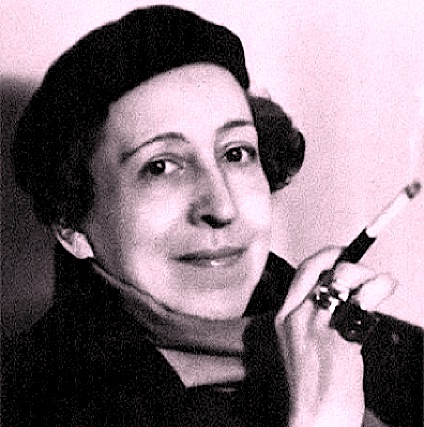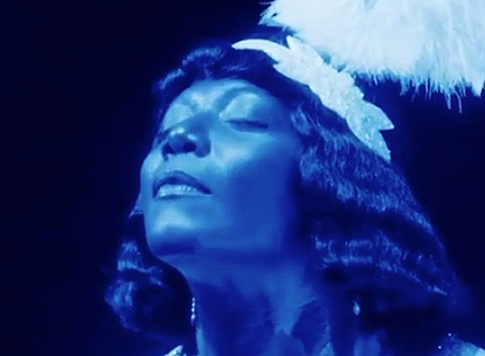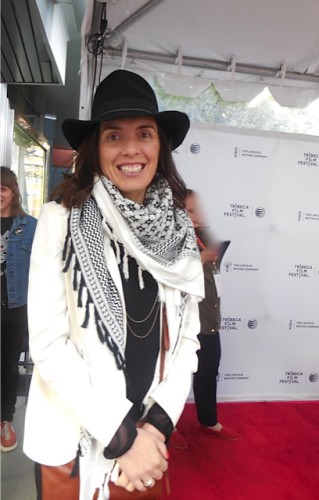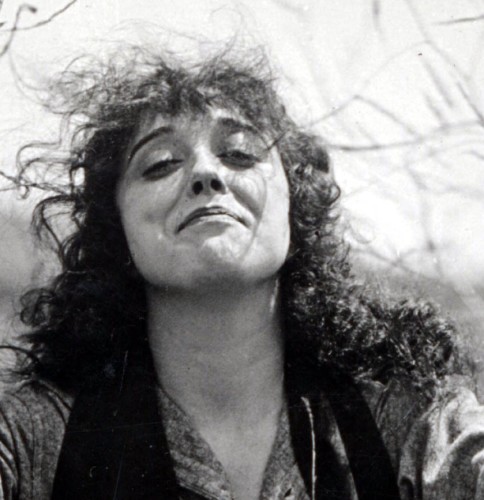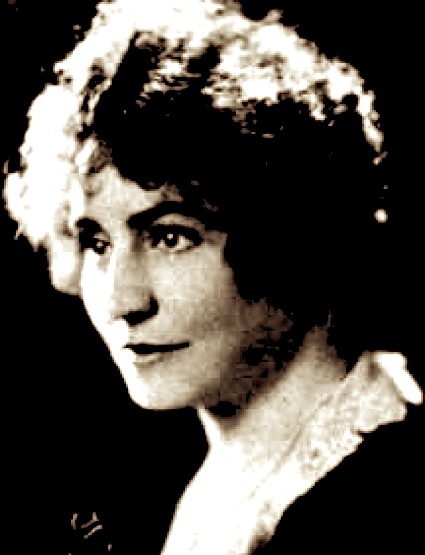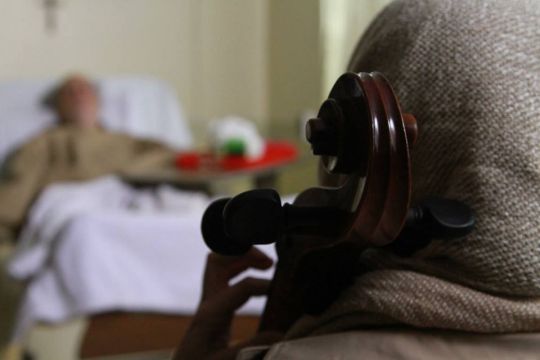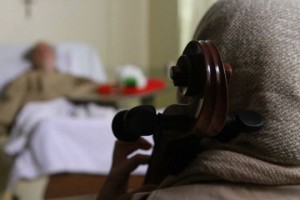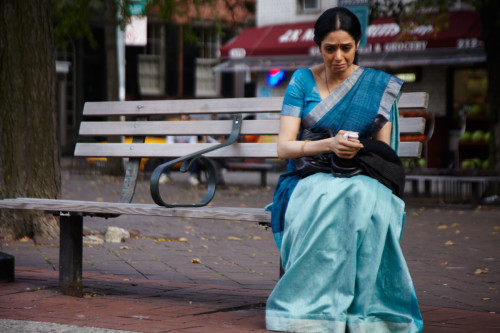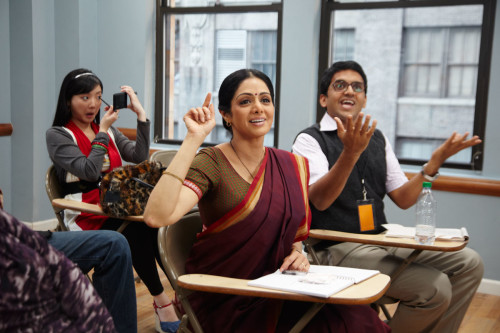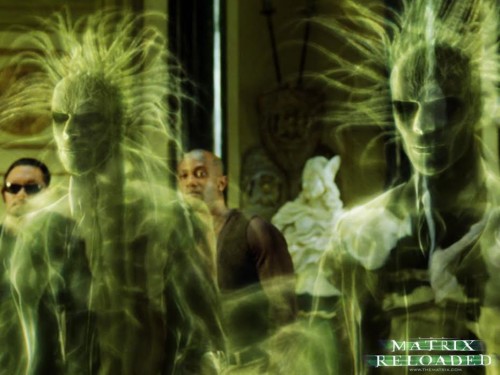Part of Vintage Viewing, exploring the work of female filmmaking pioneers.

The career of Alice Guy, the original film director, straddles two continents. In America, where she made the bulk of her films, Guy mentored Lois Weber, triggering an unparalleled wave of female film directors. But her career began in France, and it was to France that Guy returned in 1922, lecturing on film there for many years. While America was building its clout as the commercial center of the global film industry, it was France that became the center of film theory, driving experimentation. A key figure in that development was Germaine Dulac. Beginning her career as a journalist and drama critic for feminist publications La Française and La Fronde, while exploring photography, the bisexual Dulac was introduced to cinema by her girlfriends, actress Stasia de Napierkowska and writer Irène Hillel-Erlanger, founding D.H. Films with Hillel-Erlanger in 1915. Women’s contributions are often erased within their collaborations with male lovers, but Dulac reminds us that sharing goals is a natural romantic development, that goes beyond gender. Like Alice Guy’s Pierrette’s Escapades, Dulac’s early films explore playful gender fluidity, filming a ballet of a crossdressing masked ball. Her lost collaboration with future husband Louis Delluc, Spanish Fiesta, is credited with kickstarting French Impressionist cinema. Her influential The Seashell and the Clergyman, often called the first surrealist film, was released the year before Luis Buñuel and Salvador Dalí’s more famous Un Chien Andalou.
By combining the roles of critic and practising filmmaker, Dulac developed a theory of film that was uniquely coherent for its time, shaping the thinking of France’s cinematic avant-garde. Dulac was a firm believer in cinema as a director’s vision (Antonin Artaud fought publicly with Dulac over the liberties she took with his screenplay for The Seashell and the Clergyman). In a 1923 interview, Dulac declares: “cinema comes from palpable emotion… To be worth something and “bring” something, this emotion must come from one source only.” She explicitly demanded recognition as “author” (“auteure” – a term not then used of cinema) of The Seashell and the Clergyman, laying the foundation for the auteurism of the French New Wave in the 1950s. With the advent of sound, Dulac abandoned her impressionist and surrealist “visual symphonies” to become an artistic director and documentary filmmaker at Alice Guy’s old studio, Gaumont. She played a key role in nationalizing the French film industry in 1935, taught cinema at the Louis Lumière school and helped to establish the Cinémathèque Française, whose archives and program of organized screenings educated many of the French New Wave’s directors. After her death in 1942, a magazine apparently attempted to censor her obituary, out of discomfort with her “nonconformism”. Dulac’s historical significance has been marginalized, often limited to “the first feminist filmmaker” (a label which manages the impressive double whammy of limiting the scope of Dulac’s achievement while erasing Alice Guy, Lois Weber and Marion E. Wong). This marginalization resembles that of Agnès Varda, whose 1955 film La Pointe-Courte launched the French New Wave, before male directors Jean-Luc Godard and François Truffaut were allowed to dominate international coverage of the movement.
The Smiling Madame Beudet – 1923
“Only by using ideas, lights, and the camera was I able, by the time I made my first film, to understand what cinema was, art of interior life and of sensation” – Germaine Dulac
Theatre struggles to stage inner worlds. We watch characters onstage as we watch people in life, from the outside. Traditionally, women suffered most from realist depictions, because women were expected to play passive roles, easily dismissed as decorations or overlooked altogether. In Dulac’s best-known film, her subject matter is passivity and suppression itself: a frustrated housewife who does not, actually, dramatically murder her husband. Dulac creates tension from this static premise, in the conflict between Madame Beudet’s outer passivity and her vibrant inner life. Cinematic effects of slow motion, distortion and superimposition allow easy shifting between reality and vivid fantasy, confirming cinema’s potential as Dulac’s “art of interior life.”
Opening on a tranquil small town’s facade, Dulac takes us first inside the house and then inside the head, as the sparkling lake in Madame Beudet’s mind mirrors the mood of the music she plays, establishing her sophistication and artistic appreciation in a few strokes. Isolated in a black vacuum, Madame Beudet fantasizes of escape by fast car, or a burly tennis player kidnapping her mocking and controlling husband, who emotionally blackmails her with faked suicides. He locks her piano to assert his power, anticipating Jane Campion’s The Piano. The older, married Madame Labas ogles magazine pictures of attractive sportsmen, while the housemaid’s inner smile, as she fantasizes of her lover, is contrasted with her outwardly dutiful expression, emphasizing that the passions of women are independent from their social value. A running conflict over the placing of a vase of flowers shows the banality of hellish incompatibility.
Madame Beudet’s own imaginary lover is blurred, a vague aspiration, while the grinning face of her grotesque husband is tauntingly clear, haunting her from every angle, hanging in mid-air, leaping in the window in slow motion and whizzing around the house speeded up. She loads his gun, dooming him to die if he pulls another fake suicide. While jokingly throttling a doll, Mr. Beudet clumsily breaks it, because “a doll is fragile, like a woman.” Careless ignorance does as much damage as deliberate spite. In the end, Madame Beudet is only human, and shrieks when her husband seems about to really shoot himself. Can the impulse be judged, when not acted on? In her husband’s crushing embrace, “together by habitude,” the Beudets walk the streets of their small town’s picturesque façades. Traditional womanhood is an iceberg: nine tenths lie beneath the surface. La Souriante Madame Beudet is a classic feminist work, not because it depicts what should be, but because it clarifies the stifling frustration of what is.
[youtube_sc url=”https://www.youtube.com/watch?v=IKiyxv88CKE”]
Invitation to the Voyage – 1927
“the intellectuals and the filmmakers should develop a closer kinship to one another, for it is only nuances between words that irremediably keep them apart” – Germaine Dulac
From the popularity of Serge Diaghilev’s Ballets Ruses to the paintings of Henri Matisse, Orientalism saturated early 20th century Paris. Edward Said has criticized its distortions and stereotypes but, under the pretext of representing real cultures, the “Orient” allowed Parisians to role-play alternative social values, as scifi and fantasy worlds do today. In particular, the Persian homoerotic poetry of Abu Nuwas, Omar Khayyam and Rumi made Orientalism an important codifier of gay identity. Novelist Lucie Delarue-Mardrus and dancer Ida Rubinstein led a heavily orientalized lesbian counterculture in Dulac’s Paris, while Dulac’s own lover, Stasia de Napierkowska, played Cleopatra on film and danced with the Ballets Ruses. Rather than disdaining popular Orientalism, Dulac explores it as an imaginary French creation, representing a striving for sexual liberation. In Dulac’s six-part serial, 1920’s Âmes de fous, a French heiress is liberated from her oppressive stepmother by adopting the persona of an Egyptian dancer while, in 1928’s Princesse Mandane, the Orient is the hero’s dream, where his rescued princess elopes with her female bodyguard, playfully thwarting his assumed entitlement to her. In Antonia Lant’s assessment, “it was the pleasure of the Islamic as a visual and cultural code, transformed through recyclings within contemporary French urban culture, that fascinated Dulac.”
Invitation to the Voyage was born as a poem by Charles Baudelaire, where the poet seeks “to love at leisure, love and die in a land that resembles you.” Dulac’s film makes the metaphorical nature of the voyage clear, by converting it into the theme of a bar that our inhibited heroine furtively enters. Veiled by her fur stole, her eyes devour the scene with enigmatic desires, though she flinches from sexual propositions. She pictures her home life, sewing wordlessly while her husband reads. Their child’s cot materializes between them – an obligation binding them? Clocks tick meaninglessly in her husband’s repeated absences on business (rendez vous d’affaires), echoing Madame Beudet’s stagnation. The heroine smiles hungrily at dancing couples, including fleetingly glimpsed interracial and lesbian pairings, then allows herself to join them. Rolling seascapes blend with her admirer, associating his sexual promise with escape, while Oriental musicians play. Yet, just as Madame Beudet fails to kill her husband, so the lonely wife returns home with dreams unconsummated.
Soundtrack suggestion: Billie Holiday’s The Best of Jazz Forever
[youtube_sc url=”https://www.youtube.com/watch?v=mKzlYMkpxvI”]
The Seashell and the Clergyman – 1928
“Lines and surfaces evolving according to the logic of their forms, and stripped of all meanings that are too human to better elevate themselves towards abstraction of sentiments, leaving more space for sensations and dreams: integral cinema.” – Germaine Dulac
The Seashell and the Clergyman, an impressionist portrait of a clergyman’s lustful desire for a general’s wife, shares many themes with Dulac’s earlier work. Repressive hypocrisy and stifling convention are represented by clerical celibacy, while the violent fantasies of Madame Beudet are recalled in the priest’s violent fantasy of throttling his rival, the general, until his head tears apart. As with Invitation to the Voyage, the sea suggests sexual release. However, Dulac’s imagery in this film is far more abstract, evolving an aesthetic of surrealism by empowering the viewer to make their own meanings. Dulac’s theories of “pure cinema” called for all the elements of film – the rhythm of camera movement and cutting, the shape of forms portrayed, the flow between movements – to combine in their own “visual symphony” beyond narrative logic. Through the possibilities of slow or speeded motion, running film backward and jump cuts, cinema allows for time itself to become another element to sculpt with. In her 1928 film Thèmes et variations, Dulac eliminates narrative altogether, playfully juxtaposing a ballerina and factory machinery, feminine and masculine, elite and working class, before allowing them to flow together in a pure poetry of motion. In The Seashell and the Clergyman, that sense of visual poetry combines with a fever dream of erotic repression, fantasy, possessiveness and conformity. Dulac’s clergyman feels trapped as a disembodied head in a jar, surrounded by caretaking women, but ends up imaginatively trapping the woman in his place. This version is tinted and set to “The Dreams” by Delia Derbyshire (legendary electronica pioneer and composer of the Doctor Who theme tune).
[youtube_sc url=”https://www.youtube.com/watch?v=fO60-cvUFmk”]
See also at Bitch Flicks: “It Seems to Me That She Came From the Sea”: A Review of Agnes Varda’s ‘Vagabond’
Germaine Dulac was hailed as the “first feminist filmmaker” for harnessing cinema to visualize the fantasies of women, but she was not the first to do so. In 1916, Chinese-American filmmaker Marion E. Wong wrote, directed and produced The Curse of Quon Gwon, featuring a fantasy sequence that uses dissolves and superimposition to visualize its heroine’s fears of marriage. The ethnographic films of Zora Neale Hurston are among the only other vintage footage online that is directed by a woman of color. Next month’s Vintage Viewing: Zora Neale Hurston, Open Observer. Stay tuned!
Brigit McCone wishes she could pull off that sophisticated French look, but does not recommend you take up smoking. She writes and directs short films and radio dramas. Her hobbies include doodling and learning new things.
